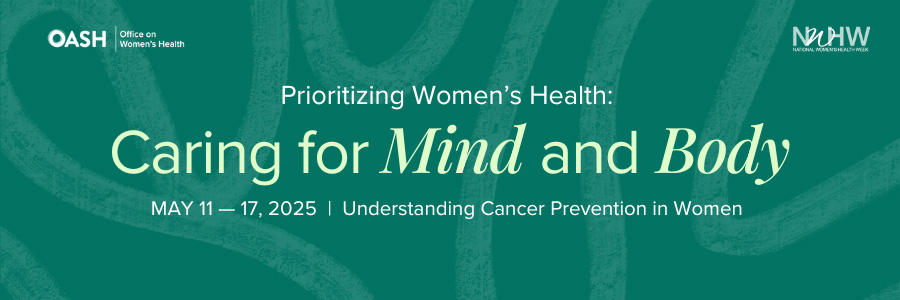
Understanding Cancer
Cancer is a serious health concern for women, but there are more options for care now, giving women more reasons to feel hopeful. Regular screening, early detection, better treatments, and more awareness are helping many women live longer, healthier lives. Still, cancer remains one of the leading causes of death among women in the U.S., accounting for about 18% of deaths nationwide. The positive takeaway is that many types of cancer can be prevented or treated more effectively when detected early.
Cancer happens when cells grow out of control and may spread to other parts of the body. Whereas some cancers develop slowly, others progress quickly. Being aware of the risks and scheduling regular screenings are powerful tools for maintaining good health and catching cancer early, when it's most treatable.
How Cancer Risk Is Different for Women
Cancer affects women and men differently. Some cancers are more common in women. Additionally, women younger than 50 are nearly twice as likely as men in the same age group to develop cancer.
Common cancers for women include:
- Breast cancer (the most common cancer in women)
- Gynecologic cancers (cancers that affect women's reproductive organs)
- Pancreatic cancer
- Colorectal (colon) cancer
- Lung cancer
Health care providers and researchers are still learning why cancer is different in women than it is in men. Differences in the body, symptoms, and how treatments work may help explain why cancer shows up differently in women compared with men.
Understanding Cancer Risk Factors
Some cancer risk factors can be changed, and others cannot.
Many things can raise or lower the chances of getting cancer. Some risks can't be changed, but other risks can be lowered by making healthy choices.
Risk factors that can be changed:
- Smoking
- Drinking alcohol
- Being physically inactive
- Eating unhealthy foods
- Being exposed to harmful chemicals for long periods
- Getting an infection from a virus such as human papillomavirus (HPV) or hepatitis B

Risk factors that cannot be changed:
- Family history (genetics), such as having close relatives with cancer
- Age (because cancer risk increases as people get older)
Talk with a health care provider about cancer risks and ways to stay healthy.
How to Lower Cancer Risk
Although not all cancers can be prevented, adopting healthy habits can help lower the risk:
- Eat whole foods, such as fruits, vegetables, and whole grains.
- Stay active and keep a healthy weight.
- Avoid tobacco products, including cigarettes.
- Limit alcohol use.
- Protect one's skin from the sun.
Even when risk factors are present, regular screenings, healthy habits, and working with a health care provider can help lower the risk of getting cancer and help find it early.
Breast Cancer and Family History
Sometimes, breast cancer is caused by gene changes passed down from parents, called inherited gene changes.
- About 5% to 10% of breast cancers are inherited.
- Certain gene changes, such as changes in BRCA1 and BRCA2, can increase the risk of breast cancer, ovarian cancer, and other cancers.
- These gene changes are more common in some ethnic groups.
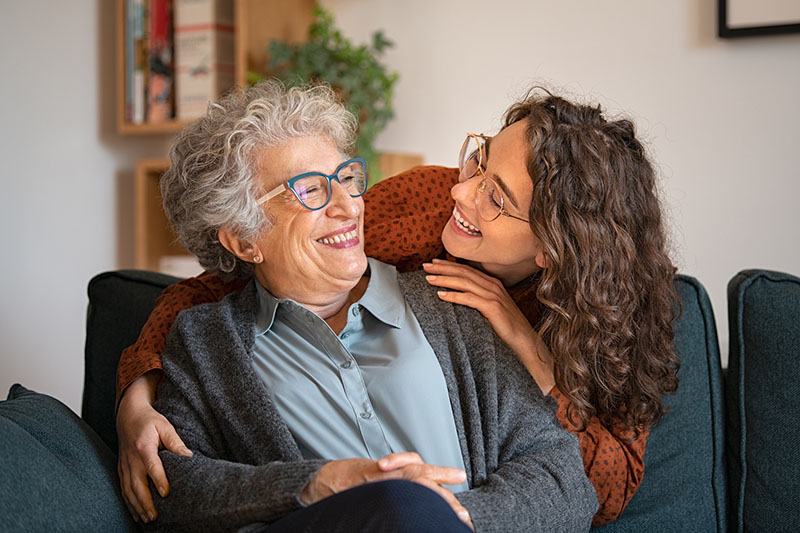
Learn More About Breast Cancer Risk Factors
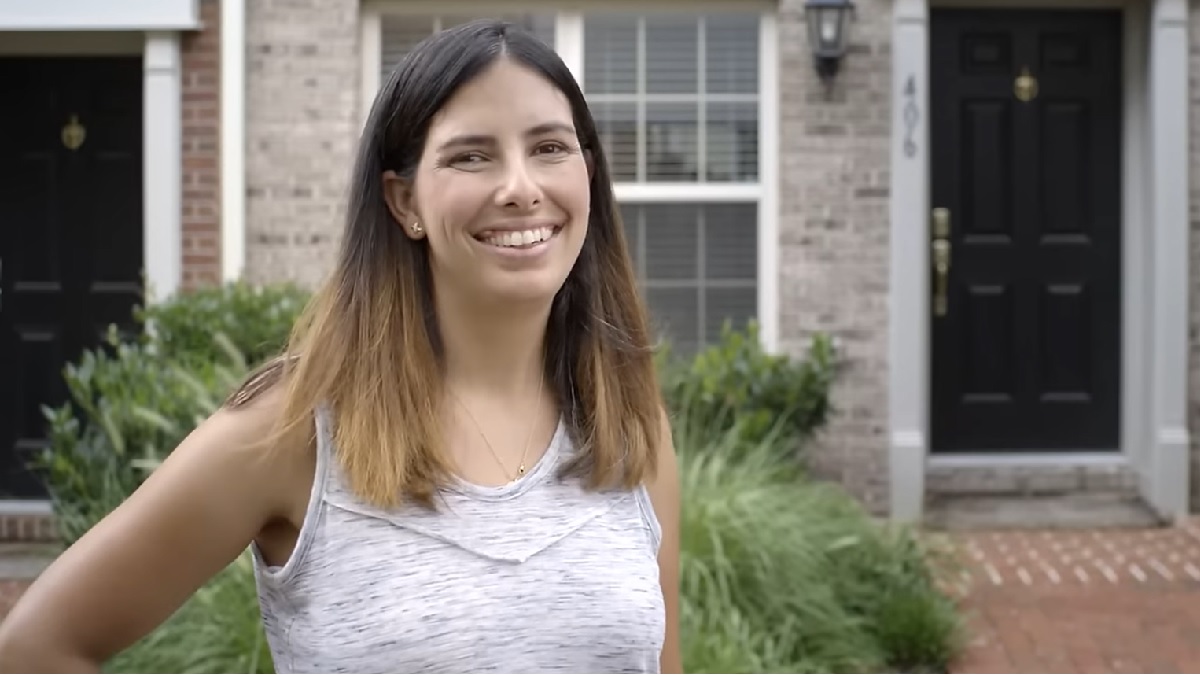
- The Centers for Disease Control and Prevention (CDC)'s Bring Your Brave campaign
- Caroline's story, from the CDC's Bring Your Brave campaign: Learn how Caroline took action after finding out she has a BRCA gene mutation.
Family Planning and Cancer
Although some cancer treatments can make it harder to have children, there are options and resources available to help. Talking with a health care provider before treatment can provide possible options to consider, such as freezing eggs, sperm, or embryos.
Learn more:
- Female Fertility and Cancer - National Cancer Institute
- Cara's story, from the CDC's Bring Your Brave campaign: Cara shares how she managed her breast cancer diagnosis and made a plan to protect her chances of having children.
How Health Care Providers Can Help
Health care providers are important partners in helping women stay healthy and reduce their cancer risk. Providers can:
- Ask about personal and family health histories
- Explain what might increase the chances of getting cancer
- Recommend the right screenings at the right time
- Share tips to help women prevent cancer and stay healthy
The CDC's Bring Your Brave campaign has free tools and resources to help health care providers talk with young women about breast cancer risk.
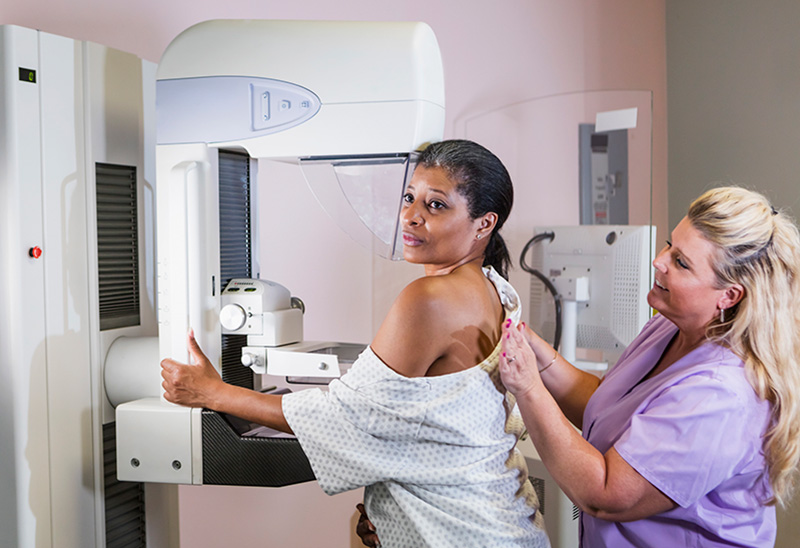
Questions to Ask a Health Care Provider About Cancer
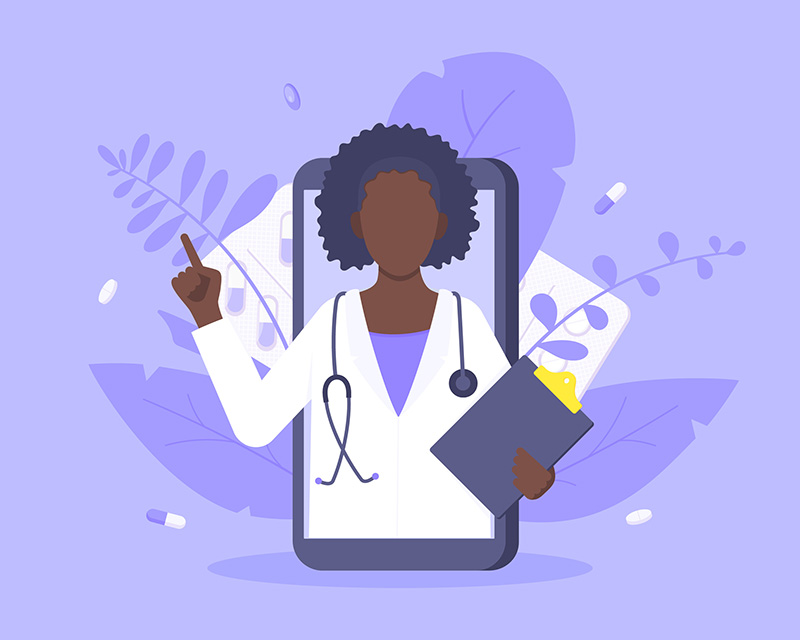 To Help Prevent Cancer
To Help Prevent Cancer
- What can I do to lower my chances of getting cancer?
- Should I change how I eat or exercise?
About One's Risk
- Do I have a higher chance of getting cancer?
- What cancers should I be checked for?
- How often should I get checked?
About Tests and Screenings
- What cancer tests do I need?
- How do the tests work?
- Are there any risks with the tests?
- How should I get ready for the tests?
- When will I get my results?
Why Early Detection Matters
Finding cancer early can help save lives. Screenings help identify cancer before symptoms appear and reduce the chances that it will spread. These include:
| Screening Test | Who Should Get It | How Often |
|---|---|---|
| Mammogram (breast cancer)* | Women ages 40-74 | Every 1-2 years |
| Pap smear (cervical cancer) | Women ages 21-65 | Every 3-5 years |
| Colonoscopy (colon cancer) | Adults ages 45+ | Every 10 years |
To learn more about recommended cancer screenings and other important health screenings for women across the lifespan, check out our Screenings and Discussions for Every Stage of Life fact sheet.
Cancer Treatment and Support
A cancer diagnosis can feel overwhelming, but it is also a moment to lean on others, find inner strength, and embrace hope. Support and treatment can make a powerful difference. Taking care of emotional and mental health is just as important as treating the body.
Cancer can be treated many ways. The right treatment depends on the type of cancer, whether it has spread, overall health, and personal wishes. Common treatments include using one or a combination of these therapies:
- Surgery - Removes cancer from the body
- Radiation therapy - Uses high-energy rays to kill cancer cells
- Chemotherapy - Uses medicine to stop cancer from growing
- Hormone therapy - Blocks hormones that help cancer grow
- Targeted therapy - Attacks cancer cells without harming normal cells
- Immunotherapy - Helps the body's immune system fight cancer
Health care providers can explain treatment options, answer questions, and help create a care plan that will work best.
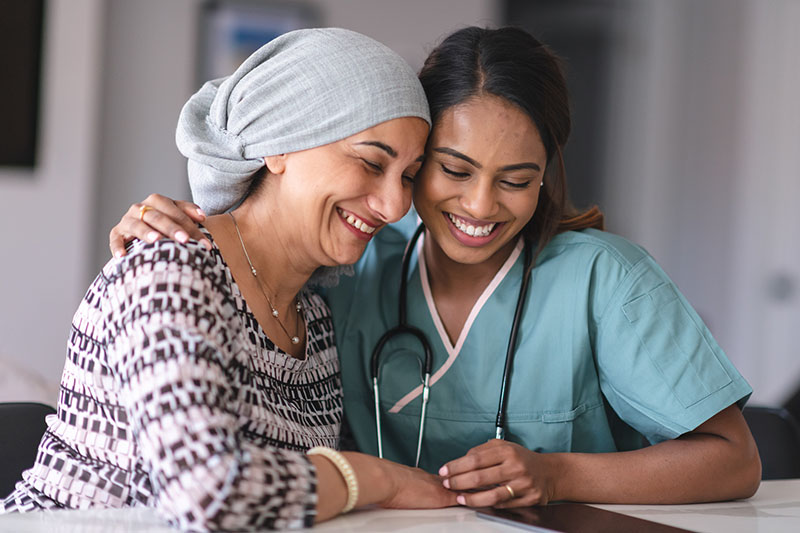 People going through cancer treatment can also:
People going through cancer treatment can also:
- Learn more about their diagnosis and treatment options
- Talk with family members, friends, or a support group
- Take breaks, rest, and do things that bring comfort
- Meet with a mental health professional who helps people with cancer
Help is available. Health care providers can connect people to counselors, support groups, and other helpful resources.
- Support Services for People with Cancer - National Cancer Institute
- Coping with Cancer - National Cancer Institute
Survivor Stories
Cancer survivors show the power of strength and resilience. Their stories can inspire others to speak up, take action, and find support during their cancer journeys.

Christine's Breast Cancer Story
Christine was in her mid-30s when she found two lumps in her breast. At first, her concerns were dismissed, but she trusted her instincts and got a second opinion. She was diagnosed with breast cancer.
Christine's story is a reminder to listen to the body and speak up if something doesn't feel right. Being an advocate for oneself can make a difference. Learn more about Christine's story.
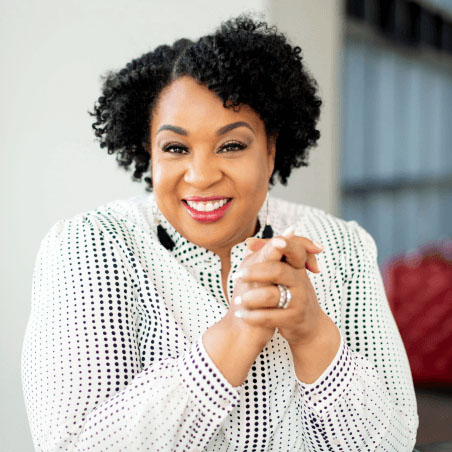
Tamika's Story — Cervical Cancer Survivor and Advocate
Tamika is a cervical cancer survivor who turned her experience into a mission to help others. After her diagnosis, she wanted to make sure no one felt alone. She now works to share survivor stories, build support, and raise awareness about cervical cancer.
Tamika helps educate others on the importance of prevention, regular screenings, and early treatment. Her story shows the power of speaking up, supporting others, and making a difference after cancer. Learn more about Tamika's story.
Resources to Learn More
- Alcohol and Cancer Risk - Office of the Surgeon General
- MyHealthfinder: Cancer - HHS Office of Disease Prevention and Health Promotion (ODPHP)
- Understanding Cancer - National Cancer Institute (NCI)
- What Is Cancer? - National Cancer Institute (NCI)
- Cancer Statistics - National Cancer Institute (NCI)
- Cancer Prevention Overview - Patient Version - National Cancer Institute (NCI)
- AI in Cancer Research - National Cancer Institute (NCI)
- Breast Cancer Risk in American Women - National Cancer Institute (NCI)
- Breast Cancer Prevention - Patient Version - National Cancer Institute (NCI)
- Adolescents and Young Adults with Cancer - National Cancer Institute (NCI)
- Cancer and Women - Centers for Disease Control and Prevention (CDC)
- Resources to Share on Gynecologic Cancers - Centers for Disease Control and Prevention (CDC)
- Breast Cancer Risk Factors - Centers for Disease Control and Prevention (CDC)
- Preventing Cancer - Centers for Disease Control and Prevention (CDC)
- Video: “Under the Paper Gown” with Amber Ruffin | Episode 4 - Centers for Disease Control and Prevention (CDC)


